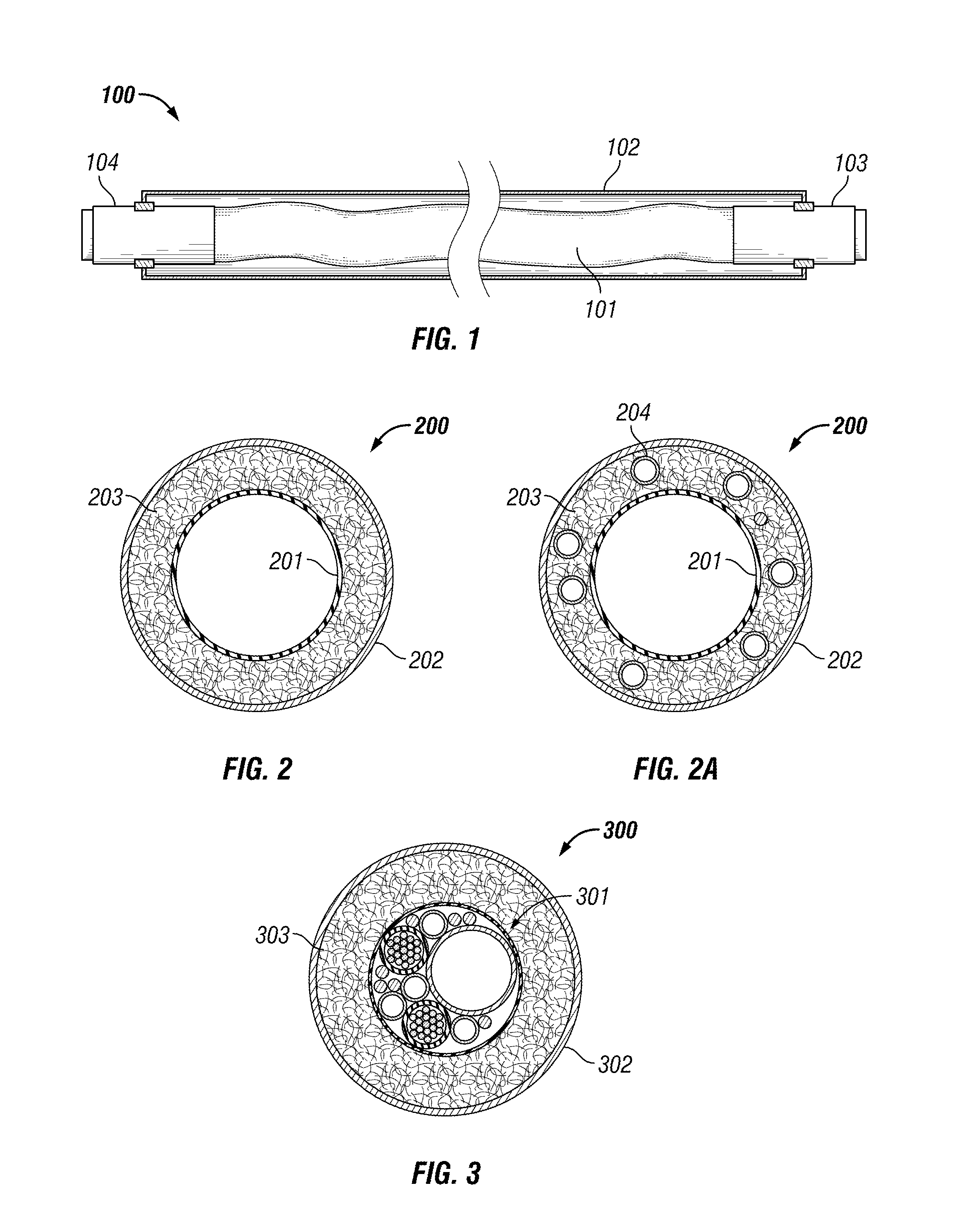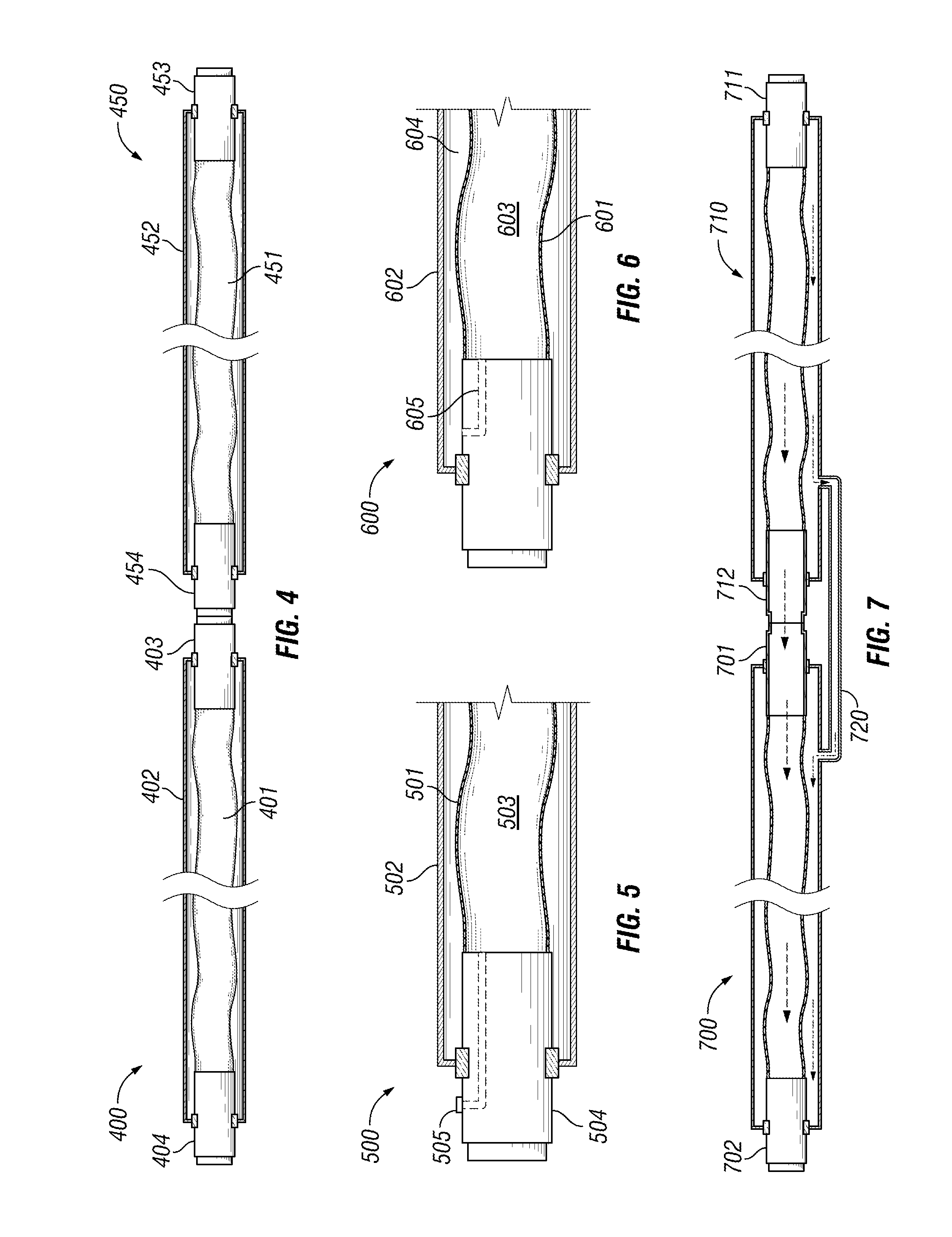Pipe-in-pipe apparatus including an engineered pipe
a technology of engineered pipes and pipe pipes, which is applied in the direction of mechanical equipment, pipe elements, other domestic objects, etc., can solve the problems of high insulation properties that typically present low (poor) external pressure resistance, system design requirements an increase in field fabrication, and the design of a conventional pipe system. achieve the effect of reducing the risk of materials buckling, avoiding undesired movement of the flowline, and enhancing the resistance to fatigue loading
- Summary
- Abstract
- Description
- Claims
- Application Information
AI Technical Summary
Benefits of technology
Problems solved by technology
Method used
Image
Examples
Embodiment Construction
[0035]In one embodiment, an engineered pipe-in-pipe apparatus has an inner engineered pipe disposed within an outer pipe (the EIP apparatus). In one embodiment the inner engineered pipe is a flexible pipe. The outer pipe or carrier pipe may be an outer steel pipe or may be an outer engineered pipe. The outer pipe will shield the inner engineered pipe. As a result, the design of the inner engineered pipe only needs to address the functions required for the EIP apparatus.
[0036]An engineered pipe is typically terminated at each end by an end fitting which incorporates a rigid connection for mating with other connections. With the EIP apparatus, the end fitting configuration of the inner engineered pipe becomes simpler as a result of the simplified design of the inner engineered pipe. The end fitting is designed to ensure that its dimensions and profile allow easy and quick field integration of the inner engineered pipe inside the outer pipe.
[0037]FIG. 1 illustrates one embodiment of th...
PUM
| Property | Measurement | Unit |
|---|---|---|
| Flow rate | aaaaa | aaaaa |
| Flexibility | aaaaa | aaaaa |
Abstract
Description
Claims
Application Information
 Login to View More
Login to View More - R&D
- Intellectual Property
- Life Sciences
- Materials
- Tech Scout
- Unparalleled Data Quality
- Higher Quality Content
- 60% Fewer Hallucinations
Browse by: Latest US Patents, China's latest patents, Technical Efficacy Thesaurus, Application Domain, Technology Topic, Popular Technical Reports.
© 2025 PatSnap. All rights reserved.Legal|Privacy policy|Modern Slavery Act Transparency Statement|Sitemap|About US| Contact US: help@patsnap.com



